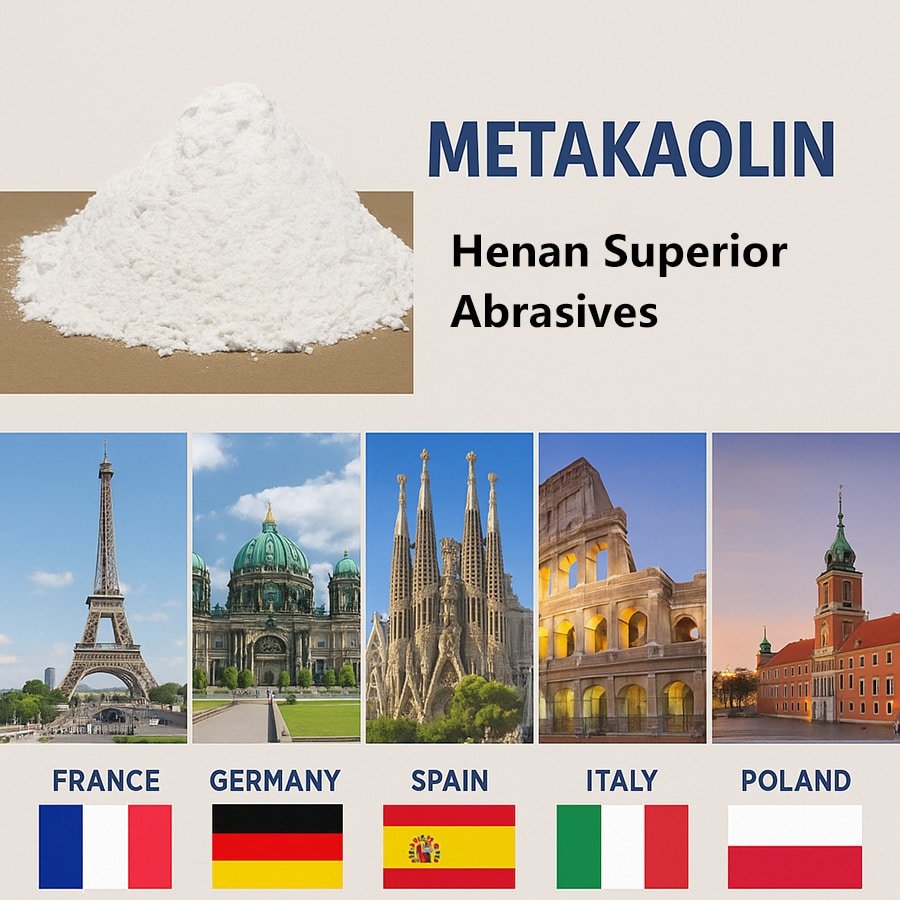Concreet is a widely used construction material due to its strength, duurzaamheid, en veelzijdigheid. Echter, engineers and researchers are continually searching for ways to enhance its properties, particularly its compressive strength. One of the most promising additives to achieve this is silica fume. This article delves into the use of silica fume in concrete mixes and its impact on compressive strength.
The Role of Silica Fume
Advantages of Silica Fume
Silica fume offers numerous benefits to concrete mixes:
- Enhances compressive strength
- Increases durability and resistance to chemical attack
- Reduces permeability
- Improves bond strength between concrete and reinforcement
- Minimizes the risk of alkali-silica reaction
Toepassingen van Silica Fume
Silica fume is often used in high-performance concrete, precast concrete, spuitbeton, en repair materials. It is also ideal for applications requiring high strength and durability, zoals bruggen, mariene structuren, and nuclear power plants.
Concrete Mix Design
Factors Affecting Mix Design
Concrete mix design involves the selection and proportioning of materials to achieve the desired properties. Factors affecting mix design include:
- Desired compressive strength
- Werkbaarheid
- Durability requirements
- Availability of materials
- Environmental conditions
Proportioning of Concrete Mix
The proportioning of concrete mix involves determining the optimal amounts of cement, water, aggregaten, and additives like silica fume. The water-to-cement ratio (w/c) plays a crucial role in determining the compressive strength and workability of the mix.
Druksterkte
Importance of Compressive Strength
Compressive strength is a crucial property of concrete, as it indicates the ability of the material to withstand loads without breaking. High compressive strength ensures the structural stability and durability of a structure.
Factors Affecting Compressive Strength
Several factors influence the compressive strength of concrete:
- Cement type and quality
- Water-to-cement ratio
- Aggregate size and grading
- Curing conditions
- Additives and admixtures
Enhancing Compressive Strength
Incorporating Silica Fume
Dosage of Silica Fume
The appropriate dosage of silica fume depends on the desired compressive strength and specific application. Typisch, silica fume content ranges from 5% tot 15% of the total cementitious materials by weight. The higher the dosage, hoe groter de potentiële toename van de druksterkte.
Optimalisatie van mengverhoudingen
Om de voordelen van silica fume te maximaliseren, de betonmix moet worden geoptimaliseerd. Dit kan inhouden dat de water-cementverhouding moet worden aangepast, totale grootte, en hulpstoffen om de gewenste verwerkbaarheid en sterkte te bereiken.
Effecten op druksterkte
De toevoeging van silicafume verhoogt de druksterkte van beton door de vorming van calciumsilicaathydraat te bevorderen (CSH) gel, dat is het primaire bindmiddel in beton. The ultrafine particles of silica fume fill the voids between cement particles, reducing porosity and improving the microstructure of the concrete.
Case Studies
Several case studies have demonstrated the effectiveness of silica fume in enhancing compressive strength. Bijvoorbeeld, the Confederation Bridge in Canada utilized high-performance concrete containing silica fume to achieve a compressive strength of 60 MPa, ensuring the bridge’s long-term durability.
In addition to the Confederation Bridge, several other projects have utilized silica fume to enhance the compressive strength of concrete:
- Bill Emerson Memorial Bridge, Verenigde Staten van Amerika: The 1,164-meter cable-stayed bridge in Missouri used silica fume in its concrete mix to achieve a compressive strength of over 69 MPa (10,000 psi). The high-performance concrete ensures the bridge’s long-term durability and reduced maintenance costs.
- Petronas Twin Towers, Maleisië: The Petronas Twin Towers, once the world’s tallest buildings, utilized high-strength concrete containing silica fume in their construction. The concrete mix achieved a compressive strength of 80 MPa, allowing the towers to withstand heavy loads and resist wind and seismic forces.
- Drieklovendam, China: The world’s largest hydroelectric dam, the Three Gorges Dam, used silica fume in its concrete mix to improve durability and reduce permeability. The high-performance concrete mix achieved a compressive strength of 60 MPa, ensuring the dam’s structural stability and longevity.
- Bandra-Worli Sea Link, Indië: The 5.6-kilometer cable-stayed bridge in Mumbai used high-performance concrete containing silica fume to achieve a compressive strength of 70 MPa. The enhanced strength and durability help the bridge withstand the harsh marine environment and heavy traffic loads.
These examples showcase the versatility and effectiveness of silica fume in enhancing the compressive strength of concrete mixes across various applications and environments.
Conclusie
Silica fume is een waardevol additief voor het verbeteren van de druksterkte van betonmengsels. Door het mixontwerp te optimaliseren en silicafume op te nemen, ingenieurs kunnen hoogwaardig beton ontwikkelen met verbeterde duurzaamheid en weerstand tegen omgevingsfactoren. Echter, het is essentieel om rekening te houden met de uitdagingen en beperkingen die gepaard gaan met het gebruik ervan om de succesvolle implementatie van silica fume in betonmengsels te garanderen.
Veelgestelde vragen
1. Wat is silicadamp??
Siliciumdamp is een bijproduct van de productie van silicium en ferrosiliciumlegeringen. Het is een zeer reactief puzzolane materiaal dat is samengesteld uit ultrafijne deeltjes.
2. Hoe verbetert silicadamp de druksterkte?
Siliciumdamp bevordert de vorming van calciumsilicaathydraat (CSH) gel en vult de holtes tussen cementdeeltjes, verbetering van de microstructuur van het beton en verhoging van de druksterkte.
3. Wat is de typische dosering van silicafume in betonmengsels?
Het silicadampgehalte varieert typisch van 5% tot 15% of the total cementitious materials by weight.
4. Zijn er nadelen aan het gebruik van silicafume in beton??
Enkele uitdagingen in verband met silicadamp zijn onder meer hogere materiaalkosten, verminderde verwerkbaarheid, vereisten voor juiste behandeling en opslag, en mogelijke gezondheids- en milieuproblemen.
5. Kan silica fume worden gebruikt in alle soorten betonmengsels?
Siliciumdamp wordt voornamelijk gebruikt in hoogwaardig beton, precast concrete, spuitbeton, and repair materials, en het is geschikt voor toepassingen die een hoge sterkte en duurzaamheid vereisen.





